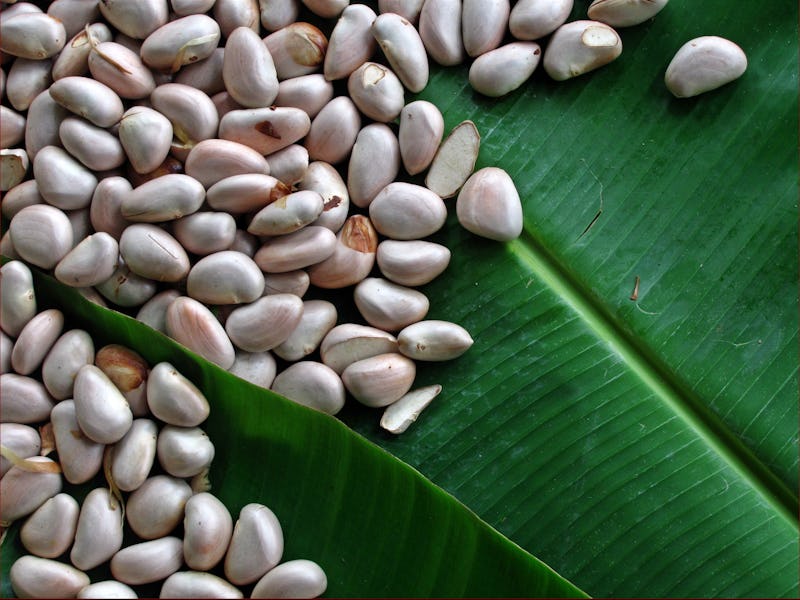From Trash to Chocolate: Scientists Make Chocolate From Jackfruit Seeds
This new research could ease the strain on struggling cocoa farmers.

Global demand for chocolate is increasing constantly. But farmers who grow cocoa (Theobroma cacao), the main ingredient in chocolate, are struggling to keep up with the demand. Aging trees, disease, and weather have all conspired to lower annual harvests. Under these conditions, the future of chocolate looks uncertain.
Enter the jackfruit. New research from scientists in Brazil and the United Kingdom may ease the strain on cocoa producers while helping chocolate lovers around the world satisfy their sweet tooth. Scientists have found that the seeds from the jackfruit can be used to simulate chocolate. This plentiful agricultural waste product can be fermented to create a product that smells and tastes very much like chocolate.
“Global cocoa production is around 3.7 million tons, and this is not expected to grow significantly in the next 10 years,” write the authors of the new study, “however, demand by 2020 is estimated to be 4.5 million tons.”
Scientists at University of São Paulo, Technology College of Piracicaba, Methodist University of Piracicaba, and University of Reading published their findings on Wednesday in the Journal of Agricultural and Food Chemistry. They found that jackfruit seeds, when fermented, contain several of the aromatic compounds that people typically associate with chocolate, including 3-methylbutanal, 2,3-diethyl-5-methylprazine, and 2-phenylethyl acetate. And while some people cook and eat the seeds from the jackfruit, a plant that grows easily in subtropical locales all around the world, people in Brazil often just throw them away.
To conduct this research, the scientists dried, fermented, and roasted jackfruit seeds. Then they made four different flours from the seeds and had 162 people rate their aromas. The scientists also judged the flours on the qualities that would make them suitable for producing cocoa products, like moisture content and pH, to determine whether these flours could be used to make chocolate. The results, though preliminary, are promising.
This is good news for chocolate lovers around the world. What’s more, this new possible source of chocolate products could make chocolate supplies even more plentiful. After all, jackfruits are huge. They weight anywhere from four to 70 pounds, and according to the researchers, seeds make up 15 to 18 percent of that weight. That’s a lot of underutilized material.
If this research influences the cocoa industry, it could mean we won’t have to go without delicious chocolate in the future. And given that the research received funding from the National Council of Technological and Scientific and Research Foundation (FAPESP), a Brazilian taxpayer-funded foundation that supports environmental and biodiversity initiatives, it seems possible that this research will eventually have an impact on policy.
The seeds from these jackfruits, which many people simply discard, could actually help ease global strain on cocoa farmers.
Abstract: Jackfruit seeds are an underutilized waste in many tropical countries. This work demonstrates the potential of roasted jackfruit seeds to develop chocolate aroma. Twenty-seven different roasted jackfruit seed flours were produced from local jackfruit by acidifying or fermenting the seeds prior to drying and then roasting under different time/temperature combinations. The chocolate aroma of groups of four flours were ranked by a sensory panel (n = 162), and response surface methodology was used to identify optimum conditions. The results indicated a significant and positive influence of fermentation and acidification on the production of chocolate aroma. SPME/GC-MS of the flours showed that important aroma compounds such as 2,3-diethyl-5-methylpyrazine and 2-phenylethyl acetate were substantially higher in the fermented product and that the more severe roasting conditions produced 2–3 times more 2,3-diethyl-5-methylpyrazine, but less 3-methylbutanal. Moisture, aw, pH, luminosity, and color were also monitored to ensure that these properties were similar to those of cocoa powder or cocoa substitutes.